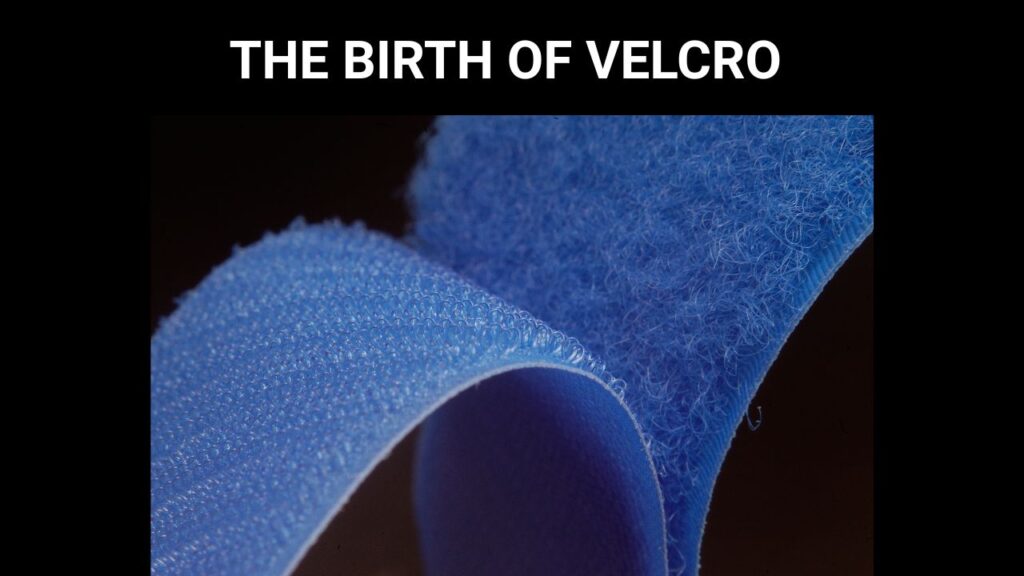Ideas stuck in nature
Sometimes the best inventions don’t come from a lab or high-tech workshop, but from something as simple as a walk in the woods. That’s exactly what happened to Swiss engineer Georges de Mestral in the 1940s. After going on a hunting trip with his dog, he noticed that the burrs were stubbornly clinging to the dog’s clothing and fur. Instead of ignoring and forgetting them, he became curious about them. Why do these tiny seeds stick together so well? This moment of curiosity set the stage for what we now know as Velcro. Velcro is a very widely used fastening system, and now you can also buy Velcro in bulk for everything from home projects to industrial applications.
biomimicry genius
What De Mestral stumbled upon was more than just a sticky seed. He discovered a perfect example of biomimicry, the practice of solving human challenges by copying nature’s strategies. When I put the burrs under the microscope, I could see tiny hooks that caught on fabric or loops of hair. Inspired by the design, he had the idea to recreate the same mechanism in textiles. Two simple parts (a hook on one strip and a loop on the other) create a secure yet easily removable bond. There was elegance in its simplicity, and it was deeply rooted in the wisdom of nature.
From idea to invention

Converting this natural mechanism into a practical product was not immediate. De Mestral spent years experimenting with different materials before finally creating a reliable version in the 1950s. Nylon proved to be an ideal choice because it can be molded into hooks that maintain their shape through repeated use. Early prototypes were crude, but persistence led to refinement. By the time Velcro came on the market, it was durable, reusable, and versatile. This journey from burr to clasp highlights how observation and determination can transform mundane annoyances into revolutionary ideas.
Early adopters and skepticism
At first I was hesitant about Velcro. Many people didn’t know what to make of it or how to use it. Buttons, zippers, and snaps have been around for decades, making Velcro feel like a novelty. However, the benefits quickly became apparent. They are easier to tighten than zippers, require less precision than buttons, and are suitable for all ages. Slowly but surely, Velcro made its way into clothing, shoes, and accessories, proving that innovations take time to be fully embraced by people.
A step towards the space age
One of the turning points in Velcro’s popularity came from an unexpected place: space. NASA adopted it for use in zero-gravity environments, where traditional fasteners frequently fail. Astronauts used it to secure tools, clothing, and equipment while floating inside their spacecraft. That support carried weight. If Velcro can work in the extreme conditions of space, it can certainly work in everyday life on Earth. Since then, the zipper’s reputation has grown and it has become a standard zipper for both fashion and practicality.
sound of success
Part of Velcro’s appeal lies in its sensory experience. The distinctive tearing sound it makes when pulled apart has become as iconic as its function. This noise is not only satisfying, but also indicates authenticity. This indicates that the bond has been broken, and in many cases this is exactly the reassurance the user needs. This combination of auditory feedback and ease of use has helped Velcro stand out in a crowded zipper world. It wasn’t just functional, it was interactive.
everyday applications
Today, Velcro has become so ingrained in everyday life that we hardly notice it. Shoes, jackets, bags, sporting goods, and even medical equipment rely on its simple hook-and-loop system. It is easy to use for both children and adults, and has expanded beyond the boundaries of fashion. From cable management to industrial straps, Velcro is the go-to solution for quick fastening. Because of its versatility, Velcro is commonly purchased in bulk for schools, offices, and homes. The invention has expanded from an inspired observation to a product that actually defines convenience.
Broad lessons from the birth of Velcro
The story of Velcro is more than just a clever fastener. It’s about how curiosity and attention to detail can lead to breakthrough discoveries. Georges de Mestral saw potential in things that most people ignored, and by imitating nature he created an entirely new category of products. The birth of Velcro shows that innovation often hides in plain sight, waiting for someone to ask the right questions. This is a reminder that our connection to nature is not only aesthetic, but also practical, providing a blueprint for solving human problems.
final thoughts
The birth of Velcro is more than just an invention story, it’s a lesson in observation, persistence, and creativity. George de Mestral gave the world a simple, effective, and infinitely adaptable fastening system by imitating the humble burr. From space missions to children’s sneakers, Velcro has proven its worth time and time again. And it all started with one man who refused to ignore what was on his clothes. The next time you hear that familiar sound, remember that it’s not just a sound, but an echo of an idea born of nature’s own ingenuity.


